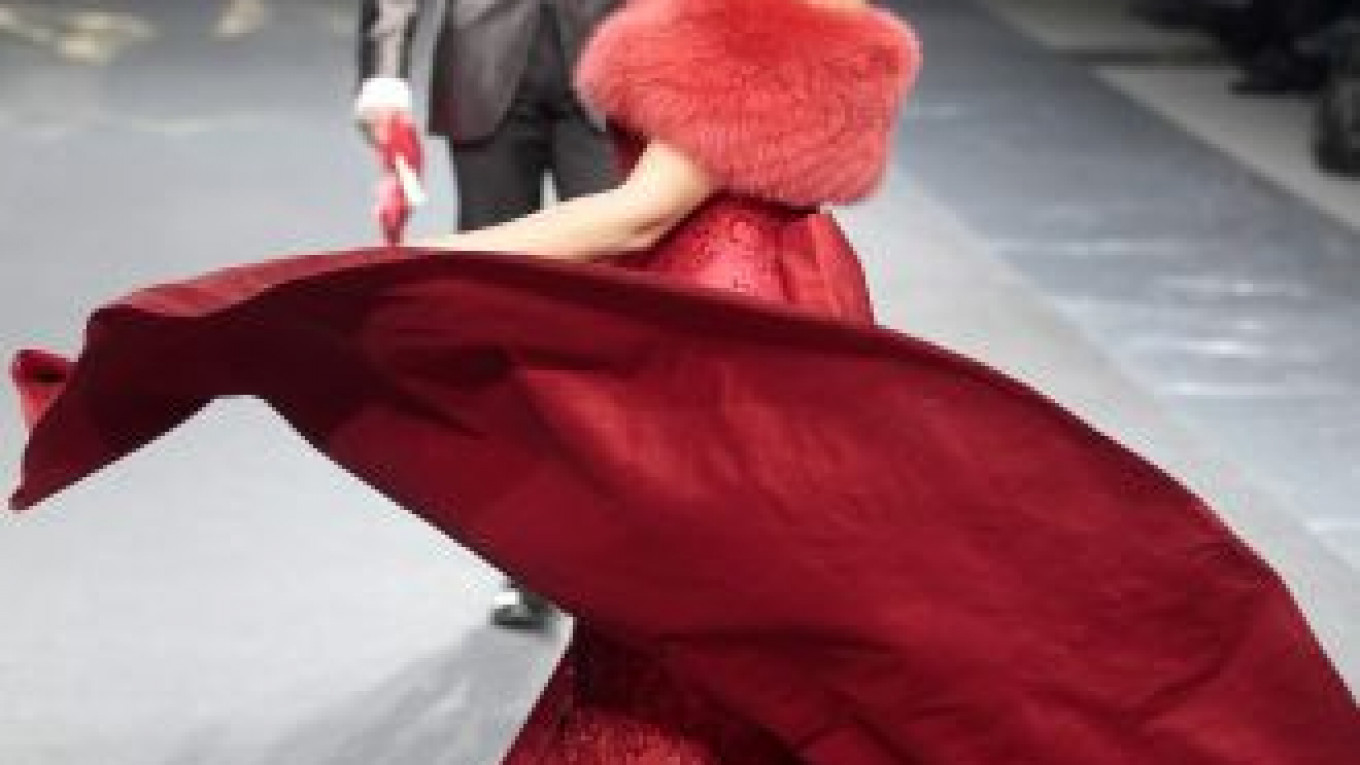Russia’s style gurus have turned to the motherland for inspiration at the capital’s fashion weeks, celebrating ethnicities and returning to a pre-Soviet era of elegance.
Flowing felt coats, the bright blues and hot pinks of folkloric shawls and cloaks reminiscent of tsarist cavalrymen dominated doyen of fashion Slava Zaitsev’s show this week.
“I showed the potential Russian fashion has,” said the 73-year-old Soviet icon, who continues to dress the wives of Russian leadership, something he has done since the 1970s.
Zaitsev said he wanted to show a “history of Russia” on the catwalk, beginning with the waistcoats and top hats worn by 19th-century writer Alexander Pushkin, to heavily embroidered floral jackets evoking the pre-revolutionary Russian countryside through to modern metallic gowns.
Loose-fitting, all-fur mink shirts and trousers evoked Russia’s tribes scattered across the Arctic, who live off and wear reindeer.
Another Russian establishment, Valentin Yudashkin, whose boutiques line Moscow’s multilaned roads, strayed from his usual violet and black gowns and also looked toward home turf for his show.
Dancers dressed in traditional Caucasus outfits leaped upon the catwalk to perform the lezginka dance from Russia’s mainly Muslim North Caucasus, where Moscow is battling an increasingly difficult Islamist insurgency.
Models then clad in shaggy ram’s wool hats and ankle-length coats traditionally worn by some in the North Caucasus strutted across the runway.
“Russian design is moving toward the nationalistic, becoming closer to styles we can identify with at home,” said Viktoria Slezko, general director of Russian boutique chain Fashion Code, which only sells creations by Russian designers.
But behind the tributes to their landscapes, there was lament for a stagnant industry which limps behind its European counterparts such as Milan or Paris.
“We have incredible talents who could be on the level of other countries, but our state does not realize this yet,” Zaitsev said.
“It is a tragedy,” he said as models wearing black and red prints similar to Russian lacquered boxes hovered around him. Zaitsev said there was not enough funding or encouragement for new designers to emerge, a sentiment echoed by ambitious young designers trying to break into the market.
“Russia is more Asian than European. There is an organization issue here, and this is the main barrier for young designers,” said Muscovite Mikhail Vilchuk, 24.
Vilchuk said perseverance and patience earned him the right to show his geometrically designed men’s clothes this week, but that many aspiring designers were put off.
“These sorts of things would not happen in France,” he said.
A Message from The Moscow Times:
Dear readers,
We are facing unprecedented challenges. Russia's Prosecutor General's Office has designated The Moscow Times as an "undesirable" organization, criminalizing our work and putting our staff at risk of prosecution. This follows our earlier unjust labeling as a "foreign agent."
These actions are direct attempts to silence independent journalism in Russia. The authorities claim our work "discredits the decisions of the Russian leadership." We see things differently: we strive to provide accurate, unbiased reporting on Russia.
We, the journalists of The Moscow Times, refuse to be silenced. But to continue our work, we need your help.
Your support, no matter how small, makes a world of difference. If you can, please support us monthly starting from just $2. It's quick to set up, and every contribution makes a significant impact.
By supporting The Moscow Times, you're defending open, independent journalism in the face of repression. Thank you for standing with us.
Remind me later.






